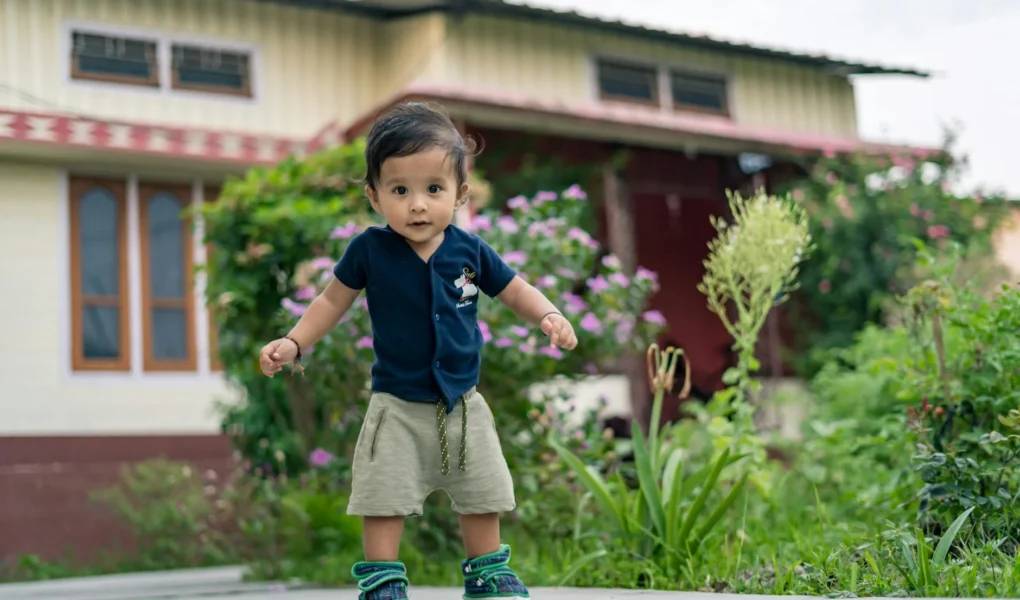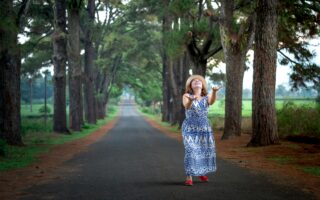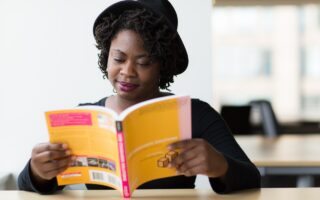A child stands at the edge of a playground, eyes fixed on the highest climber. With a deep breath and an unstoppable grin, she races forward and scrambles to the top—cheeks flushed, knees scraped, but heart wide open. Everyone around her sees it: boldness at its most real and unfiltered.
Children move through the world headfirst, raising their hands with questions or ideas, and trying things just to see what happens. They’re bold because life asked them to be, and no one has taught them to hide their spark. That kind of courage—the kind that comes natural as breathing—doesn’t have to disappear with age.
Boldness is a muscle we all once built, one small risk at a time. Returning to it now can wake up parts of us that want to try, create, and speak up again. Let’s look at how the youngest among us show what true boldness looks like, and why learning from them can help adults break free from hesitation and live with more heart.
Seeing the World Without Limits: How Children Naturally Embrace Boldness
Children live in a world without brakes. They don’t hedge their bets or second-guess every move. Where most adults see barriers or play it safe, kids greet the unknown with open arms and bright eyes. This isn’t just innocence—it’s boldness at work, shaped by natural instincts and biology. Science shows that a child’s way of moving through the world holds real lessons for those of us looking to live with less hesitation and more courage.
Unfiltered Curiosity Fuels Action: Show how children ask, try, and say what’s on their mind
Anyone who’s spent time with kids knows their questions never stop. Why is the sky blue? What happens if I do this? These aren’t just idle thoughts—they’re action sparks. A child’s curiosity pours straight into words and movement, with no filter holding them back.
- They ask “why?” and “how?” until they run out of air.
- They learn about the world by touching, tasting, and leaping into new experiences.
- When they have something to say, they say it—no tiptoeing or hesitation.
Children see the world in rich color, not muted by fear or doubt. Their gaze is free and open, a quality researchers have noticed even in the ways babies and young kids explore new environments. In fact, studies show that kids watch, absorb, and engage with their surroundings far more freely than adults do (source). This openness isn’t just cute—it’s a superpower that adults tend to lose.
Looking through a child’s eyes means giving up the urge to edit yourself before you act. Adults often let self-consciousness or past mistakes put up walls. Kids, though, move forward with unfiltered energy—driven by the belief that every new challenge is an invitation, not a risk.
Failing Fast Builds Confidence: Explore how children’s willingness to fall down and try again inspires adult resilience
Remember learning to ride a bike, or watching a toddler try to walk? There’s no shame in falling—the magic is in how kids get up, brush off, and try again. This cycle—try, fall, learn, repeat—lays the foundation for true confidence.
- Children don’t carry a fixed idea of “failure.” They see it as a step toward “figuring it out.”
- Each stumble is met with another attempt, often with a smile.
- Adults can adopt this mindset by shifting how we view setbacks: not as endings, but as part of the learning curve.
Early confidence is baked into growing up. Researchers have found that a child’s sense of self-esteem is already deeply set by age five (children’s self-esteem already established by age 5). This inner strength lets them bounce back from mistakes without losing steam. By watching children, we see that confidence isn’t just built by success. It’s built even more by the freedom to try and fall.
Adults can take this to heart. Boldness grows when we let ourselves fall forward—quickly, openly, and with the curiosity of a child.
The Courage to Stand Out: Authenticity in Children’s Boldness
Everyday moments with kids reveal a kind of bravery that goes deeper than leaping off jungle gyms. Children have a way of showing up as themselves, no matter who’s watching. Their feelings show in the way they talk, stand, and move. They don’t wear masks or hide what matters to them. This readiness to be real is a courage adults often forget but can reclaim. Real boldness, after all, isn’t just about big risks—it’s about daring to be fully seen and heard, just like a child.
Speaking Up for Truth and Fairness: Describe real-life scenarios where children call out unfairness or express boundaries clearly
 Photo by cottonbro studio
Photo by cottonbro studio
Kids have a radar for what’s fair and what isn’t. They notice quickly when lines are crossed or when someone is left out. More striking, they rarely stay quiet about it.
- When one child takes an extra cookie, another might step up: “That’s not fair, we all get one.”
- On the playground, a girl may jump in when a friend is teased, saying, “Stop it. That’s mean.”
- Kids tell parents or teachers when rules are broken or someone feels hurt—even when it’s uncomfortable.
This calling out isn’t rudeness. It’s a sign of trust and honesty. Children believe adults will listen. They believe their own voices matter. Research shows that children value truth highly and will even risk speaking up if it means fixing something wrong (children’s honesty encouraged by trust).
Children also set boundaries in plain words. “That’s my toy, please don’t take it,” or “I need space,” comes out clear and direct, without apologies or second-guessing. These moments are powerful examples of stating needs honestly—something adults are often taught to soften or hide.
Adults can learn from watching this in action. Authentic boldness means naming what feels wrong, even if voices shake a little. It means being willing to ask for fairness and respect out loud.
Leading With Heart Over Fear: Highlight how emotional honesty in children leads to stronger, bolder connections
Kids don’t hide their feelings behind polite smiles. If something hurts, they show tears. When excited, they laugh out loud. You see honest joy, fear, and anger on their faces and in their words. That openness brings other people closer, not farther away.
Emotional honesty binds children together:
- Two kids who fight might cry, shout “I’m mad,” and five minutes later share a hug and go back to playing.
- When children say, “I miss you,” or “I’m scared,” they invite comfort rather than push others aside.
- Their friendships grow from shared feelings, not just shared interests.
This openness makes bonds strong, because there’s no guessing or hiding. Experts note that helping kids express their emotions builds trust, both with themselves and with others (how to help kids express their emotions). They know it’s safe to show up as they are.
For adults, this is a wake-up call. Many hold feelings back out of fear—fear of being seen as weak or “too much.” But real strength comes from leading with the heart. Speaking truth, even if the voice trembles, forges connection and builds confidence. The courage to be seen, in both joy and struggle, roots boldness in what matters most: being real.
Learning Through Play: How Risk and Adventure Shape Confidence
 Photo by Kampus Production
Photo by Kampus Production
Children thrive in sandboxes, fields, and living rooms not just because they’re having fun, but because every game and risk shapes who they become. Think about a child perched on the edge of a slide or shouting instructions in tag. Each moment of play is packed with small risks, bursts of courage, and real chances to try—and sometimes to fall. This is how confidence starts, one leap at a time. Adults don’t “grow out” of this need; we only lose the habit of honoring it. Choosing adventure over routine, even in simple ways, calls back that early boldness and opens the door to real growth.
Saying Yes to New Challenges: Outline how trying new things—at any age—keeps the boldness muscle strong
As kids, the world is built for trying. Climbing trees, joining soccer games with strangers, daring to dance when music starts—these decisions come easy when risk equals fun. Every new challenge feels like a personal invitation.
For grown-ups, that urge to play and test ourselves gets quieter. We find comfort in routines and predictability. But science shows that adults also need play to sharpen confidence and creativity. Taking on new activities—no matter your age—does more than entertain:
- Boosts Confidence: Each time you try something new, your brain records a “win.” Even small successes help build a strong sense of self.
- Builds Resilience: Facing unknowns, even in low-stakes ways (like a new class or hobby), trains you to adapt.
- Fosters Creativity and Problem-Solving: Activities that stretch comfort zones let us practice flexible thinking.
- Connects Us to Others: Adventure often brings people together, deepening friendships and community.
If you’re feeling stuck, try joining a group you’ve never tried, cooking a new dish, or running a new route. These simple acts keep your boldness muscle strong and healthy. As explained in guides about the benefits of play for adults, exploring new experiences ignites joy, relieves stress, and feeds lifelong learning (The Benefits of Play for Adults).
Turning Small Risks Into Growth: Provide examples from both childhood and adult life where calculated risks yield rewards
Risks don’t only happen in boardrooms or on zip lines. Small, steady nudges past what’s familiar offer the deepest sparks of growth. In childhood, this can look like:
- Speaking up in class for the first time, even if your voice shakes.
- Trying out for a school play with no stage experience.
- Learning to ride a bike, knowing you might tip over.
For adults, the landscape shifts but the power of small risks is the same:
- Volunteering to present in a meeting when public speaking scares you.
- Traveling alone to a new city and navigating without a plan.
- Admitting when you don’t know something, and asking for help.
Each of these choices might bring nerves or a flutter of fear. Yet, every time we bet on ourselves—even in small ways—confidence grows stronger. Experts say that engaging in physical, social, and creative play boosts cognitive abilities and problem-solving skills in adults (The Importance of Play for Adults). It works because those safe chances to falter and recover remind us that boldness is built with practice.
Children live this cycle every day: fall, try again, and discover new strengths. Adults can reclaim the same spirit by letting play, risk, and new experiences back in—even a little at a time. Each step forward, however small, plants the seeds for bigger, bolder growth tomorrow.
Building Resilience: What Children Teach About Handling Setbacks
We all fall down, but children show us how to get up with heart. Watch a child tied up in a shoelace knot, tears brimming, only to wipe their cheek and try again. That simple pattern—struggle, feel, then push forward—offers adults a blueprint for real strength. Kids turn mistakes into stepping stones, and their tools for getting back up are practical and refreshingly honest. Borrowing their approach can change how we handle our own setbacks, no matter our age.
Embracing Mistakes As Steps Forward: Show how children’s reactions to failure encourage adults to view setbacks as lessons rather than defeats
 Photo by cottonbro studio
Photo by cottonbro studio
Children are open about missing the mark. If a tower of blocks tumbles or a drawing goes sideways, you rarely see a child pack it in for good. Instead:
- They groan or shout, “Uh-oh!” but often jump right back in.
- Kids give themselves a second chance almost without thinking.
- If things go wrong, they might pause, regroup, and start again—fewer grudges, more tries.
This natural bounce-back isn’t luck. Children learn that mistakes are normal and that trying again is part of learning—not a sign to stop. When a child struggles with tying shoes, they don’t think, “I’m not cut out for this.” They tie, untie, and try for days because it’s how they grow. Adults can take cues from these micro-resets. Treating failure as information, not identity, rewires us to keep moving. It matters for our mental health, too—children who are allowed to experience and work through setbacks develop stronger emotional skills and confidence (Why Children Need to Experience Failure to Learn).
Letting mistakes stay small and safe, instead of making them proof we can’t succeed, is a lesson worth copying. The next time you fumble, name it, feel it, and look ahead. Every wrong turn is a lesson on the map—kids know this by heart.
Practicing Self-Kindness and Perseverance: Offer actionable advice on self-talk inspired by phrases children use or hear when learning new things
Kids talk themselves through hard things in ways adults often forget how to do. Overheard on any playground or at a kitchen table:
- “It’s okay, everyone messes up sometimes.”
- “I can try again.”
- “I almost got it that time!”
These gentle nudges aren’t just words—they’re the script that keeps children moving through challenges. Self-kindness is their reset button. Adults benefit from this kind of positive self-talk, especially when things go sideways. Here are a few ways to use it:
- Give yourself permission to fail: Replace “I always mess up” with “Mistakes help me get better.”
- Cheer for effort, not just outcome: Try saying, “I worked hard on that, and I’m proud I tried.”
- Notice small steps: Celebrate each try, even when the goal isn’t reached yet.
Researchers have found that positive self-talk boosts confidence and persistence in both kids and adults (Encouraging Positive Self-Talk in Children). The difference is that adults often slip into harsher inner voices. By borrowing the gentle phrases kids use, we can dial down self-blame and dial up grit.
Supporting ourselves with honest, hopeful language matters—especially during tough times. This isn’t ignoring struggle; it’s choosing to talk to ourselves the way we would to a child learning something new. Back yourself with words that help, not hurt, and the persistence to keep going will follow.
For more ideas on supporting perseverance, take a look at these expert-backed tips for modeling self-trust with positive self-talk (3 tips to help kids persevere). These tools aren’t just for childhood—they’re skills for life.
Bringing Childlike Boldness Into Adult Life
Reclaiming the boldness you once carried in childhood means looking back to move forward. Children radiate courage in simple ways—rushing headlong into new games, asking endless questions, showing emotions freely, and cheering each other on. You don’t have to let those habits fade. Small changes in your thinking, and the circles you keep, can help you grow everyday courage right where you are.
Simple Shifts to Grow Everyday Courage: List practical habits or mindset changes adults can start today, drawn directly from childhood behaviors
Think about the fearless way kids greet the world. Their courage shows up in what they do each day, not just during the big moments. You can practice boldness by adding more “childlike” habits into your routine:
- Say “yes” before you’re ready. Children jump into activities and sort out the details later. Give yourself permission to try before you feel fully prepared.
- Ask questions, even if you feel awkward. Kids aren’t afraid to say “why?” Your curiosity is worth more than your silence.
- Move your body often. Children run, tumble, and wiggle because it’s how they learn and loosen up. Take a walk, stretch, or dance to shift your energy and your mood.
- Express your feelings out loud. Kids shout when happy and cry when sad. Practice naming your feelings—even if just to yourself or a close friend.
- Celebrate the small wins. Notice every new thing you try, not just the ones that work out. Give yourself credit, like a child showing off their latest drawing.
Want to reflect? Ask yourself: Where can I take one small, bold step today, even if it feels uncomfortable? For inspiration on reigniting childlike habits, see this list of powerful qualities adults can regain from childhood (15 Powerful Childlike Qualities to Regain).
 Photo by Kampus Production
Photo by Kampus Production
Simple habits can reshape your day. Say your thoughts out loud in meetings. Invite a friend to join a new class with you. Greet mistakes with a smile, and get back in the game.
Creating Space for Boldness in Community and Relationships: Share how supporting each other, much like children do with friends, fosters collective courage
Boldness gets stronger in a group. Children don’t stand alone—they huddle, cheer, or hold hands with friends before taking a leap. Adults can build the same kind of support by tending to their relationships and making room for honesty.
Building this space in your circles might look like:
- Cheering for others’ risks and wins, not just your own.
- Listening with curiosity instead of judgment when someone shares a new idea or fear.
- Letting your guard down first—share something honest to invite openness from others.
- Setting aside regular time for honest talks, even short ones, with your inner circle.
- Celebrating the courage it takes just to try, not only when things succeed.
Kids remind us: encouragement is contagious. When you show up boldly, friends are more likely to do the same. Offer an open ear, share your hopes, or invite someone to dream out loud with you. This builds trust and lets everyone breathe easier together.
If your circle feels stuck or quiet, look for new ways to widen it. Letting go of relationships that don’t make space for your true self can be a brave first step. Tips for creating room for new connections and bold ideas can help shift your network in the right direction (How to Create Space for New Relationships).
Where could you offer support or ask for it today? Write it down. The more you build this habit, the bolder you—and those around you—will feel.
Conclusion
The child at the edge of the playground—standing tall, grinning wide, and ready to leap—reminds us that boldness begins with a simple, unselfconscious step forward. Their courage looks easy, but behind every scramble and shouted “why” is a kind of wisdom adults often forget: action is the way past fear.
Let that image linger. When you feel hesitation or worry start to weigh you down, picture that child. Take one small, honest risk today. Speak up, try something new, support someone else’s dare, or name your true feelings. Each choice to act with more heart pulls you back to that boldness you once knew so well.
Thank you for reading. If you’re ready to grow your own courage, start with one step—just like a child would. How will you move forward, wide open and unafraid? Share your stories or dreams below, and help build a community where bold spirits lift each other higher.












